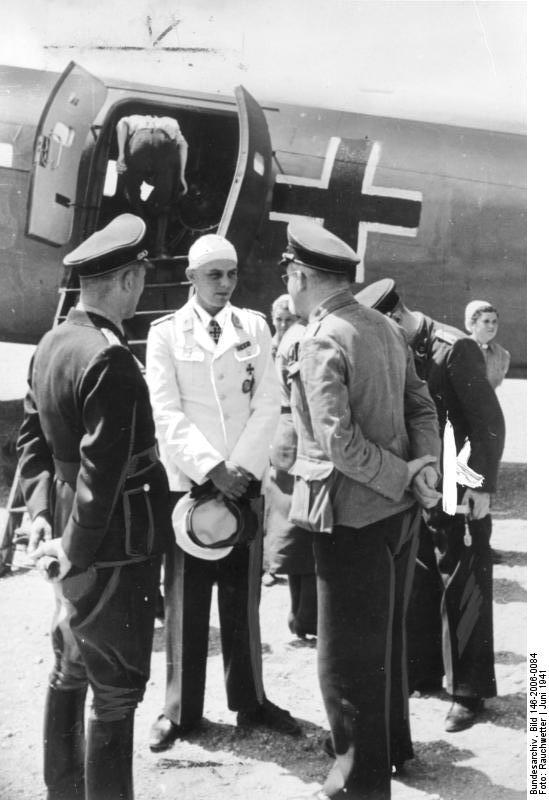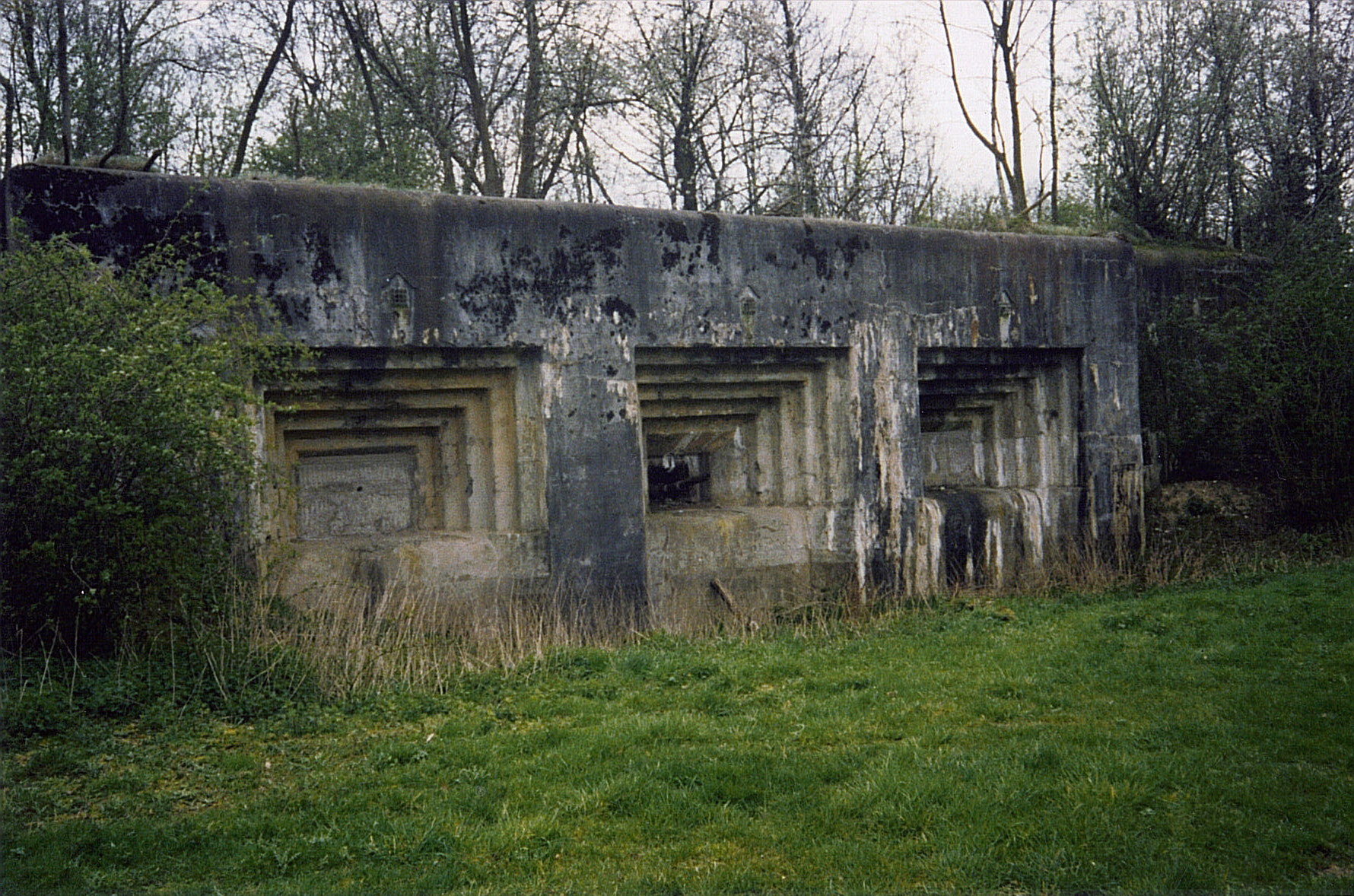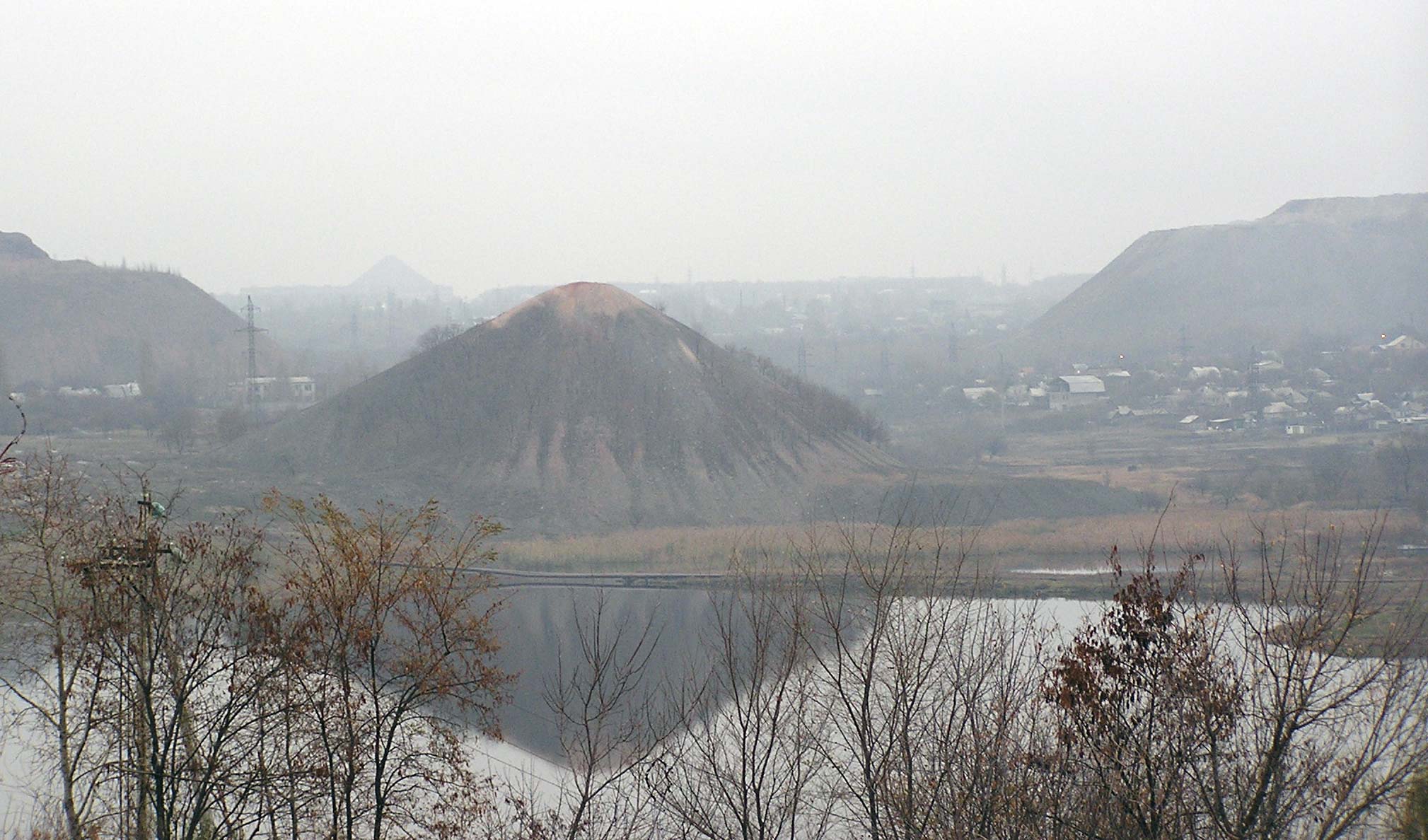|
Luftlande-Sturm-Regiment
Luftlande-Sturm-Regiment 1 (also known as ''Sturmabteilung Koch'') was a German ''Fallschirmjäger'' regiment in the Luftwaffe which captured the Belgian Fort Eben-Emael during the Battle of Belgium, took part in the Battle of Crete, and fought on the Eastern Front during World War II. Operational history The Battalion was formed in November 1939; it was named after its commander, Captain Walter Koch, as Assault Battalion ''Koch''. It was intended to open the way into central Belgium by capturing the formidable Fort Eben-Emael defending the Albert Canal as well three bridges over the canal. The DFS 230 gliders were to be used to allow the assault groups to silently land virtually on top of their objectives, surprising the defenders and preventing them from destroying the bridge. The airborne assault took place on 10 May 1940. The Belgian defenders were unable to muster any serious counterattacks against the paratroops. Two more battalions were formed during the fall of 1940 and ... [...More Info...] [...Related Items...] OR: [Wikipedia] [Google] [Baidu] |
Eugen Meindl
__NOTOC__ Eugen Meindl (16 July 1892 – 24 January 1951) was a German paratroop general in the Luftwaffe of Nazi Germany during World War II. He was a recipient of the Knight's Cross of the Iron Cross with Oak Leaves. Life and career Born in 1892, Eugen Meindl enlisted in the army in 1912 and served during World War I. Meindl served with various artillery units in the Reichswehr, the post-war armed forces of the Weimar Republic, and subsequently in the Wehrmacht of Nazi Germany. In November 1938, Meindl was named commander of the 112th Mountain Artillery Regiment in Graz. Promoted to Oberst, he led the "Meindl Group" and made his very first parachute jump at Narvik. He transferred to the Luftwaffe in November 1940. During the airborne invasion of Crete, Meindl jumped near the Platanias Bridge, where he was shot in the chest and seriously wounded. In February 1942, Meindl, now a Generalmajor, became commander of the newly formed Luftwaffe Division Meindl in the Soviet Union. ... [...More Info...] [...Related Items...] OR: [Wikipedia] [Google] [Baidu] |
Massacre Of Kondomari
The Massacre of Kondomari ( el, Σφαγή στο Κοντομαρί) was the execution of male civilians from the village of Kondomari in Crete by an ad hoc firing squad consisting of German paratroopers on 2 June 1941 during World War II.Heaton, C.D. ''German Anti-partisan Warfare in Europe, 1939-1945'', Schiffer Pub., 2001, .Mazower, Mark. ''Inside Hitler's Greece: The Experience of Occupation, 1941-44'', Yale University Press, 2001, . The shooting was the first of a series of reprisals in Crete. It was orchestrated by ''Generaloberst'' Kurt Student, in retaliation for the participation of Cretans in the Battle of Crete which had ended with the surrender of the island two days earlier. The massacre was photographed by Franz-Peter Weixler, a German army war propaganda correspondent, whose negatives were discovered 39 years later in the Federal German archives by a Greek journalist. Background Geography The village of Kondomari is part of the Platanias municipality and is locate ... [...More Info...] [...Related Items...] OR: [Wikipedia] [Google] [Baidu] |
Walter Koch (Fallschirmjäger)
Walter Koch (10 September 1910 – 23 October 1943) was a commander of the Fallschirmjäger during World War II who died in mysterious circumstances after openly criticising Adolf Hitler. Koch, who was the recipient of the Knight's Cross of the Iron Cross for his actions during the Battle of Fort Eben-Emael in May 1940, had publicly denounced the Führer's infamous Commando Order, which ordered that all captured enemy commandos were to be executed. Shortly afterwards the '' Oberstleutnant'' and commander of ''Fallschirmjäger-Regiment 5'' died in Berlin from injuries allegedly resulting from a motor vehicle collision. Early career Walter Koch joined the ''Landespolizei'' as an officer on 3 April 1929. As a '' Leutnant'' he had served in the state police and a police battalion for special purposes (''Polizeiabteilung z.b.V. Wecke''). In 1935 the new commander-in-chief of the Luftwaffe, Hermann Göring, transferred this police unit into the reformed Luftwaffe and renamed it th ... [...More Info...] [...Related Items...] OR: [Wikipedia] [Google] [Baidu] |
Fallschirmjäger
The ''Fallschirmjäger'' () were the paratrooper branch of the German Luftwaffe before and during World War II. They were the first German paratroopers to be committed in large-scale airborne operations. Throughout World War II, the commander of the branch was Kurt Student. Pre-war history During the interwar years the rapid development of aircraft and aviation technology drew the attention of imaginative military planners. The idea of aerially inserting a large body of troops inside enemy territory was first proposed during World War I by Brigadier General Billy Mitchell, commander of the U.S. Army Air Corps in France.Ailsby, Christopher: ''Hitler's Sky Warriors: German Paratroopers in Action, 1939-1945'', page 12. Spellmount Limited, 2000. However, the Allied High Command was forced to abandon the idea, as it was unprepared for such an undertaking, both logistically and in materiel. Among the first to recognize the potential of airborne forces were Italy and the Soviet Un ... [...More Info...] [...Related Items...] OR: [Wikipedia] [Google] [Baidu] |
Razing Of Kandanos
The Razing of Kandanos ( el, Καταστροφή της Καντάνου) refers to the complete destruction of the village of Kandanos in Western Crete ( Greece) and the killing of about 180 of its inhabitants on 3 June 1941 by German occupying forces during World War II.MacDonald, Callum. ''The Lost Battle: Crete 1941'', The Free Press, 1993, .Mosier, John. ''Cross of Iron: The Rise and Fall of the German War Machine'', NY: Henry Holt & Co., 2006; . It was ordered by Generaloberst Kurt Student in reprisal for the participation of the local population in the Battle of Crete that had held advancing German soldiers for two days. The destruction constituted one of the most atrocious war crimes committed during the occupation of Crete by Axis forces in World War II. Background Local resistance The Battle of Crete began on 20 May 1941 with a large-scale airborne invasion planned to capture the island's strategic locations. Kandanos is located on the road from Chania ... [...More Info...] [...Related Items...] OR: [Wikipedia] [Google] [Baidu] |
Crete Order Of Battle
This is the complete order of battle for the Battle of Crete and related operations in 1941. Allied Land forces Commonwealth & Allied Forces, Crete - "Creforce" ;Headquarters Creforce - (Eastern Zone, east of Chania) :Major-General Bernard Freyberg, VC, Colonel Stewart * C Squadron, 3rd The King's Own Hussars (seven light tanks) :Major G.W.Peck :10 Light Tank Mk VIs * B Squadron, 7th Royal Tank Regiment :Lieutenant George Simpson :Two Matilda tanks, crewed in part by two officers and five gunners of the 2/3rd Field Regiment, Royal Australian Artillery (RAA). * 1st Battalion, The Welch Regiment :Lieutenant Colonel A. Duncan, MC (Force Reserve) 2nd New Zealand Division ;Headquarters New Zealand Division - Brigadier, Acting Major General Edward Puttick - (Western Zone, west of Chania) * 27th New Zealand Machine Gun Battalion (Lt. Col. FJ Gwilliam) (179 personnel) * 5th New Zealand Field Artillery Regiment (less infantry detachment) (256 personnel) * 4th New Zealan ... [...More Info...] [...Related Items...] OR: [Wikipedia] [Google] [Baidu] |
Fort Eben-Emael
Fort Eben-Emael (french: Fort d'Ében-Émael, ) is an inactive Belgian fortress located between Liège and Maastricht, on the Belgian-Dutch border, near the Albert Canal, outside the village of Ében-Émael. It was designed to defend Belgium from a German attack across the narrow belt of Dutch territory in the region. Constructed in 1931–1935, it was reputed to be impregnable and at the time, the largest in the world. The fort was neutralized by glider-borne German troops (85 men) on 10 May 1940 during the Second World War. The action cleared the way for German ground forces to enter Belgium, unhindered by fire from Eben-Emael. Still the property of the Belgian Army, the fort has been preserved and may be visited. Location The fort is located along the Albert Canal where it runs through a deep cutting at the junction of the Belgian, Dutch and German borders, about northeast of Liège and about south of Maastricht. A huge excavation project was carried out in the 1920 ... [...More Info...] [...Related Items...] OR: [Wikipedia] [Google] [Baidu] |
Alikianos Executions
The Alikianos executions ( el, εκτελέσεις στον Αλικιανό) was the mass execution by firing squad of mostly male civilians from Alikianos and nearby villages in Crete, Greece by German paratroopers on 24 May, 2 June and 1 August 1941 during World War II. The executions were ordered by Generaloberst Kurt Student, commander of the XI Air Corps, in reprisal for the active participation of Cretan civilians in the Battle of Crete. Background The village of Alikianos ( el, Αλικιανός) is located on a fertile plain near the north coast of Crete, approximately 12 km (7.5 mi) southwest of the city of Chania. During the Battle of Crete, Richard Heidrich's 3rd Fallschirmjäger Regiment (''FJR 3'') was ordered to land on the plain and advance northwest towards the Maleme airstrip, one of the island's most strategic targets. Covering the rear of the 3rd Regiment was the 7th Engineer Battalion, dropped in the vicinity of Alikianos between the road to C ... [...More Info...] [...Related Items...] OR: [Wikipedia] [Google] [Baidu] |
Army Group North
Army Group North (german: Heeresgruppe Nord) was a German strategic formation, commanding a grouping of field armies during World War II. The German Army Group was subordinated to the '' Oberkommando des Heeres'' (OKH), the German army high command, and coordinated the operations of attached separate army corps, reserve formations, rear services and logistics, including the Army Group North Rear Area. Operational history The Army Group North was created on the 2 September 1939 by reorganization of the 2nd Army Headquarters. Commander in Chief as of 27 August 1939 was Field Marshal Fedor von Bock. Invasion of Poland The first employment of Army Group North was in the invasion of Poland of 1939, where in September it controlled: * 3rd Army * 4th Army * a reserve of four divisions ** 10th Panzer Division ** 73rd Infantry Division ** 206th Infantry Division ** 208th Infantry Division. The Army Group was commanded by Fedor von Bock for the operation. After the end o ... [...More Info...] [...Related Items...] OR: [Wikipedia] [Google] [Baidu] |
Stalino
Donetsk ( , ; uk, Донецьк, translit=Donets'k ; russian: Донецк ), formerly known as Aleksandrovka, Yuzivka (or Hughesovka), Stalin and Stalino (see also: cities' alternative names), is an industrial city in eastern Ukraine located on the Kalmius River in Donetsk Oblast. The population was estimated at in the city core, with over 2 million in the metropolitan area (2011). According to the 2001 census, Donetsk was the fifth-largest city in Ukraine. Administratively, Donetsk has been the centre of Donetsk Oblast, while historically, it is the unofficial capital and largest city of the larger economic and cultural Donets Basin (''Donbas'') region. Donetsk is adjacent to another major city, Makiivka, and along with other surrounding cities forms a major urban sprawl and conurbation in the region. Donetsk has been a major economic, industrial and scientific centre of Ukraine with a high concentration of heavy industries and a skilled workforce. The density of h ... [...More Info...] [...Related Items...] OR: [Wikipedia] [Google] [Baidu] |
Yukhnov
Yukhnov (russian: Ю́хнов) is a town and the administrative center of Yukhnovsky District in Kaluga Oblast, Russia, located on the Kunava River ( Oka's basin) northwest of Kaluga, the administrative center of the oblast. Population: History It has been known since 1410. The "Town" status was granted to it in the year 1777.During the Second World War the town was occupied by the Germans from October 5, 1941 to March 5, 1942. Administrative and municipal status Within the framework of administrative divisions, Yukhnov serves as the administrative center of Yukhnovsky District, to which it is directly subordinated. As a municipal division, the town A town is a human settlement. Towns are generally larger than villages and smaller than city, cities, though the criteria to distinguish between them vary considerably in different parts of the world. Origin and use The word "town" shares ... of Yukhnov is incorporated within Yukhnovsky Municipal District as Yukhnov ... [...More Info...] [...Related Items...] OR: [Wikipedia] [Google] [Baidu] |
Smolensk
Smolensk ( rus, Смоленск, p=smɐˈlʲensk, a=smolensk_ru.ogg) is a city and the administrative center of Smolensk Oblast, Russia, located on the Dnieper River, west-southwest of Moscow. First mentioned in 863, it is one of the oldest cities in Russia. Population: The city has been destroyed several times throughout its long history because it was on the invasion routes of various empires. Smolensk is known for its electronics, textiles, food processing, and diamond faceting industries. Etymology The name of the city is derived from the name of the Smolnya River. Smolnya river flows through Karelian and Murmansk areas of north-western Russia. The origin of the river's name is less clear. One possibility is the old Slavic word () for black soil, which might have colored the waters of the Smolnya. An alternative origin could be the Russian word (), which means resin, tar, or pitch. Pine trees grow in the area, and the city was once a center of resin processing ... [...More Info...] [...Related Items...] OR: [Wikipedia] [Google] [Baidu] |







